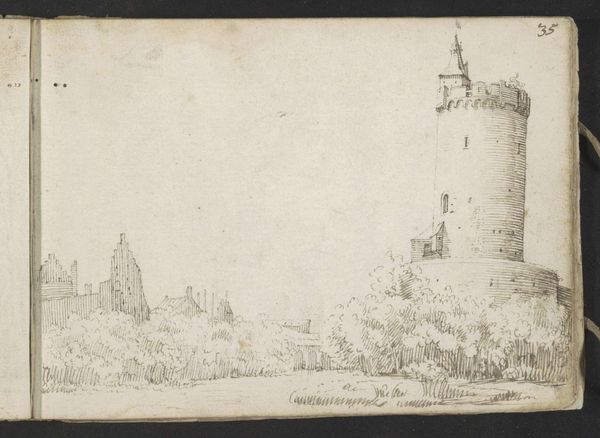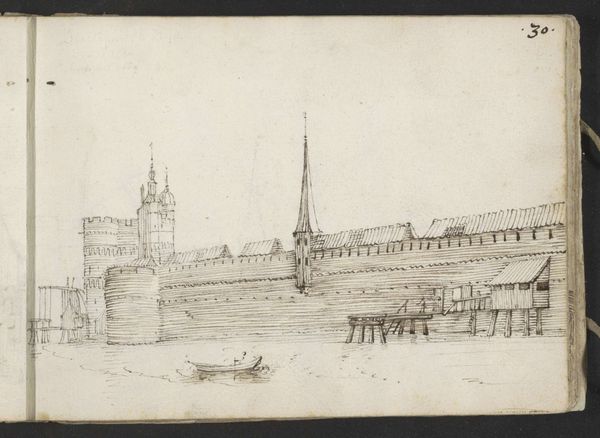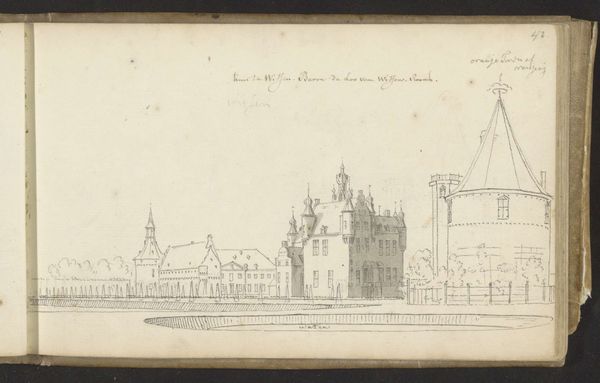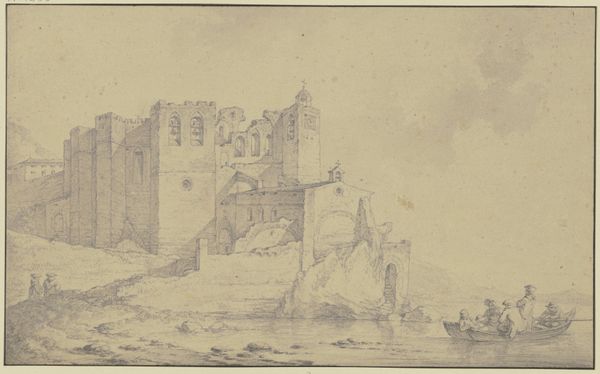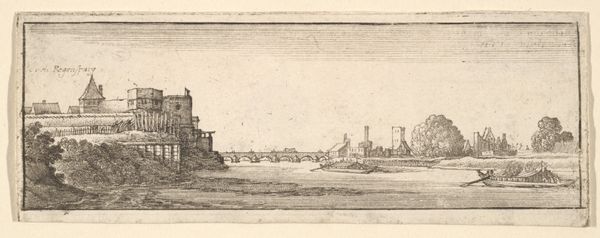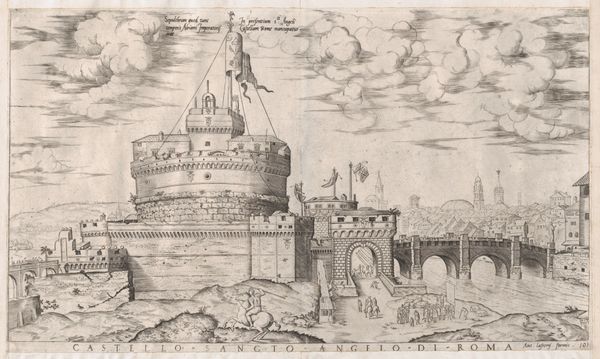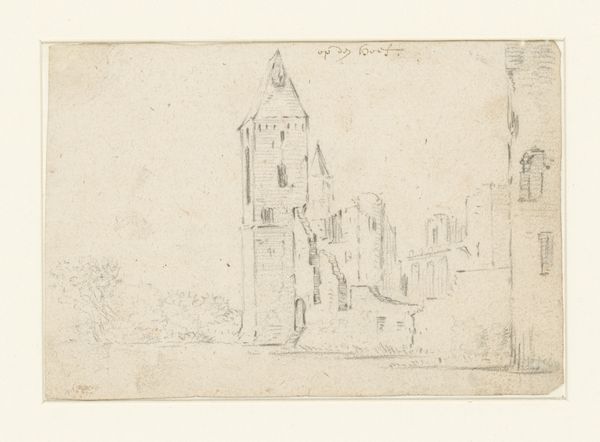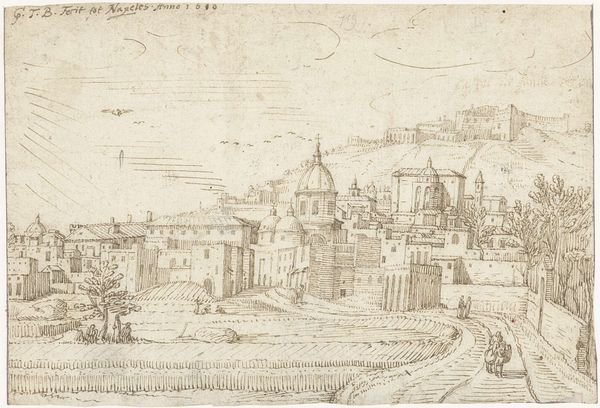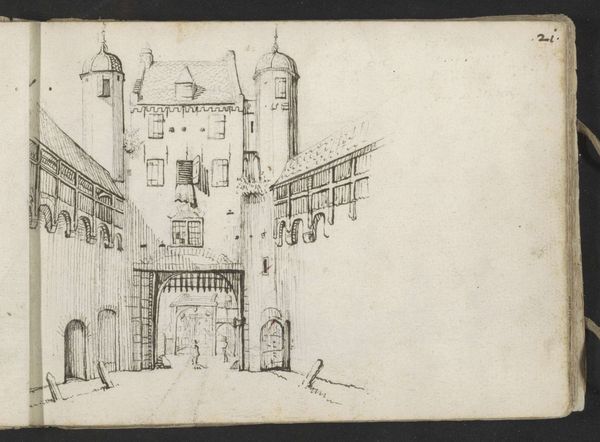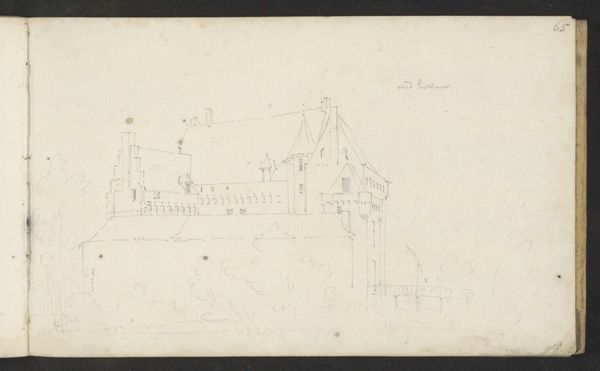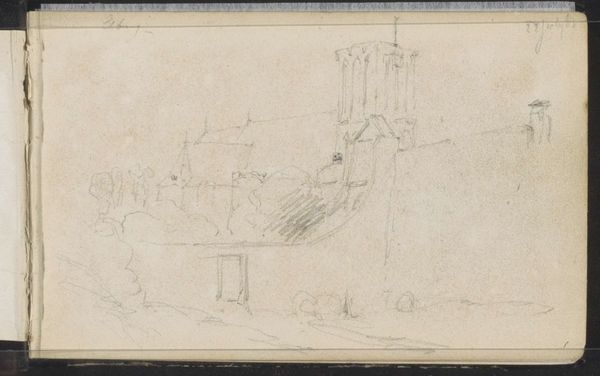
drawing, ink, pen
#
drawing
#
aged paper
#
quirky sketch
#
dutch-golden-age
#
sketch book
#
landscape
#
personal sketchbook
#
ink
#
sketchwork
#
pen-ink sketch
#
pen work
#
sketchbook drawing
#
pen
#
storyboard and sketchbook work
#
sketchbook art
Copyright: Rijks Museum: Open Domain
Curator: This evocative ink drawing is titled "Diezerpoort te Zwolle," created by Gerard ter Borch II, around 1631 to 1633. Editor: It feels like a quick observation, almost a snapshot. I love the immediacy of the pen strokes—rough but deliberate. Curator: Precisely. Ter Borch's skillful use of line weight creates a sense of depth, even with minimal shading. He focuses intently on the gate's structure, how it mediates the city’s access to waterways. Zwolle was a major trading hub, so the material function of this port – and Ter Borch’s meticulous documentation of its design - speaks to broader shifts in the Dutch Golden Age. Editor: It makes me think about borders, both physical and social. Ports weren't just points of economic exchange, but also sites of encounter and potential conflict. What did that imposing gate *mean* to the people who passed through it, particularly concerning Dutch identity at this pivotal moment in history? Curator: Good point! Ter Borch came from a family deeply involved in civic life. We might then consider the labor involved in constructing this massive gateway, the politics of fortification and control, the way the structure projects Dutch power. This wasn’t just picturesque scenery; it represents tangible social power and state apparatus. Editor: Right, and looking at it through that lens, one can ponder Dutch society’s complex relationship with openness and exclusion—the invitation to trade set against a looming promise of defensive impermeability. Curator: Yes. Note how the technique, essentially quick pen-work, belies the complex themes woven into the image. It's like Ter Borch's economical execution lets him document not just what the port looked like, but what it *represented*. Editor: It’s a testament to the power of art that even a simple sketch, made with accessible materials, can be layered with such meaning. Thanks to it, we may contemplate socio-political considerations concerning urban spaces and border control from centuries ago. Curator: Exactly, the drawing emphasizes labor, structure, and social role.
Comments
No comments
Be the first to comment and join the conversation on the ultimate creative platform.
